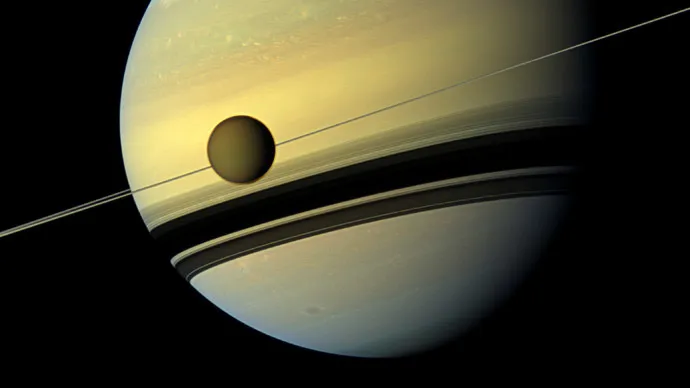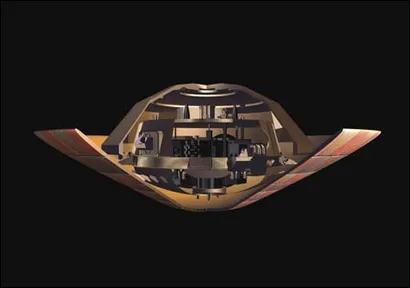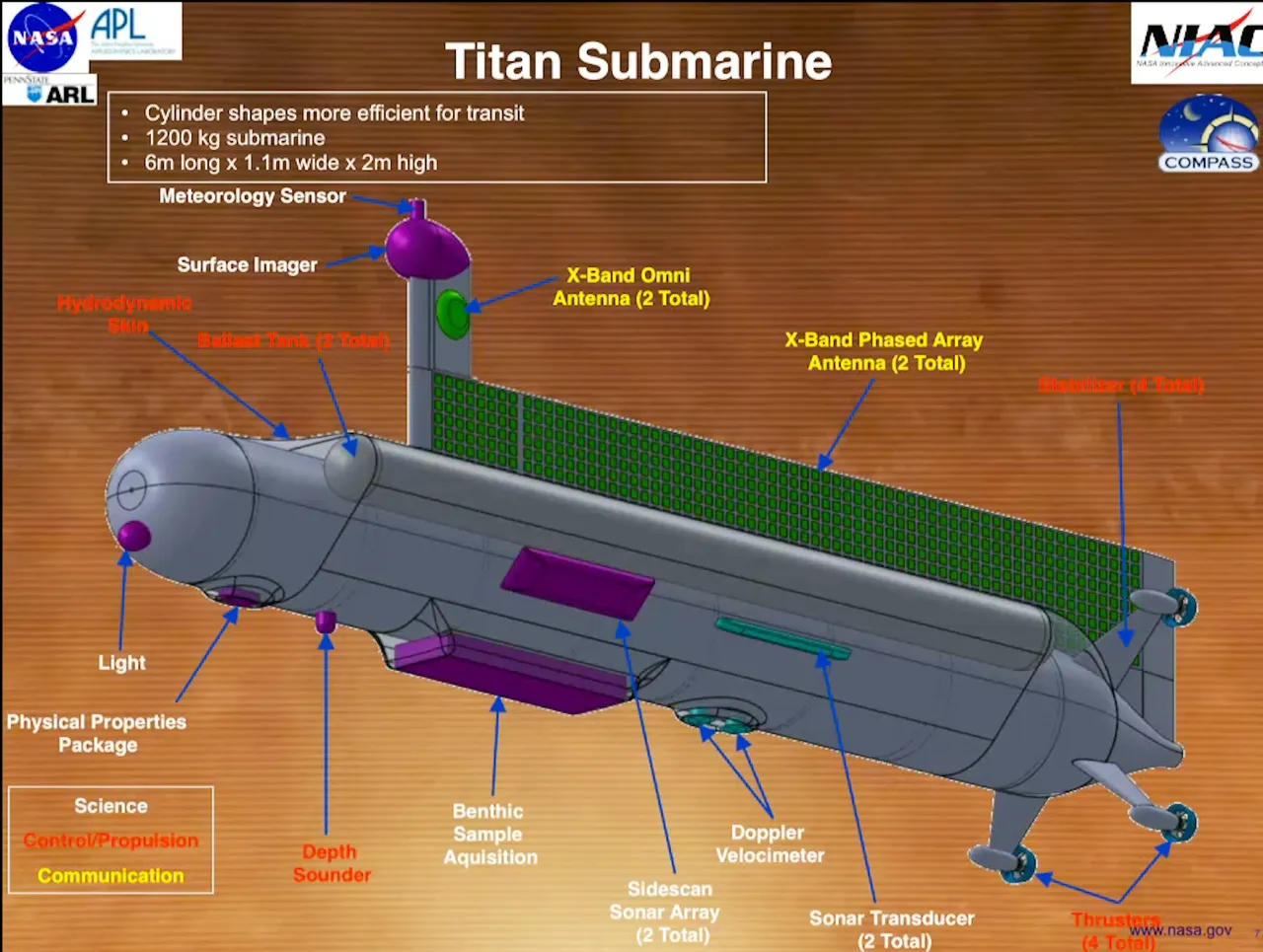Okay I lied, this post will talk about NASA's idea of sending a submarine to Titan, Saturn's moon. But "Submarines on Saturn" just had such a great ring to it, I couldn't resist. But I digress. NASA has created preliminary concept plans for sending a submarine to Titan, which, as far as we know, is the only other planetary body in the solar system with oceans, rivers, lakes, and liquid bodies of all kinds. There's just one catch: they're all full of liquid methane (and ethane).
Background
Up until recent years, scientists believed that in order for there to be organic life, water had to be present as well. Almost every organism on the face of the earth lives in, consumes, or is made up of water in some way. Well, that presumption has turned out to be wrong, and that is incredibly exciting because it opens up new possibilities for where we might find extra-terrestrial life. Such as the liquid methane oceans of Titan.

Titan appearing in front of Saturn - (Source)
Up until now, we have only ever sent one probe to the surface of Titan. This probe, named the Huygens probe after the astronomer who discovered Titan, went crashing through the moon's substantial atmosphere to land on the surface in 2004. Due in part to the incredibly harsh conditions of Titan, the Huygens probe only managed to transmit data for 90 minutes. All other information about Titan has been gathered by the space probe Cassini, which carried the Huygens probe to Saturn, and has been circling the planet ever since. However, 90 minutes worth of close range data for the only known planetary body in the solar system with liquid oceans on it's surface is somewhat lacking to say the least.

Cross Section of the Huygens Probe - (Source)
The Idea
The proposal, spearheaded by NASA's Jason Hartwig still has a lot of details to iron out (like funding the project in the first place). However, Hartwigs proposed submarine would carry a variety of scientific instruments intended to measure chemical composition of the waters, the tides, wind and waves, and ocean floor features and structure. It might look something like this:

NASA Titan Submarine - (Source)
The submarine would have to be completely autonomous because
- It would be unable to communicate with earth while under the ocean's surface and
- It would take a maddening amount of time to send commands to the submarine (consider that it takes 8 minutes one way to communicate with the Curiosity probe on Mars, and Saturn is many times farther away)

Distance of planets in solar system from the Sun - (Source)
Luckily, NASA is already making large improvements on autonomous probes, as seen in the Curiosity probe's newly uploaded software that allows it to travel the surface of Mars by itself. The team hopes to deploy the submarine in Kraken Mare, Titan's largest northern ocean. (Source)
Problems
Unfortunately, missions to Jupiter have been given preference over those to Saturn, so it might still take quite some time before we see a submarine exploring the oceans of Titan. Luckily, due to the 7 earth-year seasons on Titan, the next viable time to even send a probe to the moon is not until the late 2030's.
Another issue is that, considering Titan's temperature runs at around -290˚ F, the submarine would probably start to freeze before it could go more than 450 meters deep.

Artist Rendition of Titan - (Source)
And, potentially more problematic than that, Hartwig's team is not even certain that their proposed gas ejection system for changing depth would even work in a high-pressure liquid methane environment.
Looking Ahead
Considering the growth of China's space agency in recent years, and the inherent unwillingness the United States has to be one-upped by China in anything, I could well imagine a scenario where China and the US enter a new Space Race. While that would certainly not be beneficial from a security standpoint, it would mean that space exploration would grow and expand in leaps and bounds as it did in the 70s and 80s.

(Source)
It would be something like this that might be the catalyst to push humanity well and truly into space, and to make it impossible for governments around the world to pass up on potentially finding life elsewhere in the solar system. For the sake of the world, I hope that that scenario will not come to pass. But for the sake of my desire to see the creation of an interplanetary submarine...bring it on China.
Sources
- https://www.inverse.com/article/20221-life-seeking-nasa-submarine-on-titan-will-be-autonomous
- https://www.inverse.com/article/17979-scientists-saturn-moon-titan-extraterrestrial-life
- https://www.inverse.com/article/18643-nasa-curiosity-laser-autonomous-upgrade
- http://www.sciencealert.com/nasa-wants-to-send-an-autonomous-submarine-to-explore-titan-s-oceans
- http://www.sciencealert.com/cassini-just-discovered-flooded-canyons-on-saturn-s-moon-titan
- https://www.nasa.gov/content/titan-submarine-exploring-the-depths-of-kraken/#.V-r_QpMrKRs
- http://onlinelibrary.wiley.com/doi/10.1002/2016GL069679/full
- http://news.bbc.co.uk/2/hi/science/nature/7897585.stm